Shining Light on the Effects of Renewable Energy in Tanzania
How does renewable energy alleviate poverty in rural Tanzania?
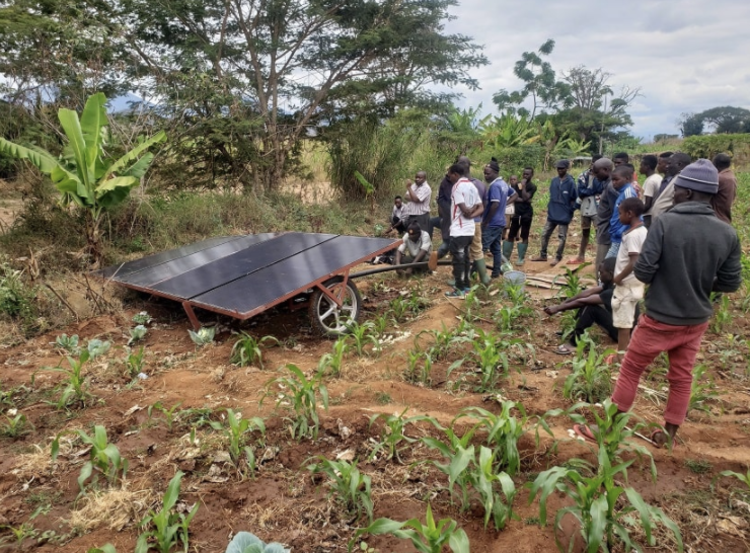
Introduction
In a modern world that is constantly surrounded by ever-developing technology, there is still about 13% of the world that lives without any electricity at all. Within this percentage, about 75% of this population resides in Sub-Saharan Africa (Routley, 2017). Without electricity, many of the communities in this area do not have access to constant clean water, light during the evening times, adequate health care machinery, etc. One country that falls into this category of energy impoverished countries is Tanzania.
Located on the east coast of Africa, only about 33% of the population lives with access to electricity with about 66.2% of this population residing in urban areas, leaving the majority of people living in rural Tanzania without energy (Routley, 2017). Many of the communities that fall in rural Tanzania are struggling with poverty. These residents do not have easy access to health services, running water, education or transportation. There are currently many efforts that are trying to electrify these areas in hopes of increasing their standard of living and improving access to basic needs.
This project will explore the effects of renewable energy and how it is being used to alleviate poverty in rural Tanzania.
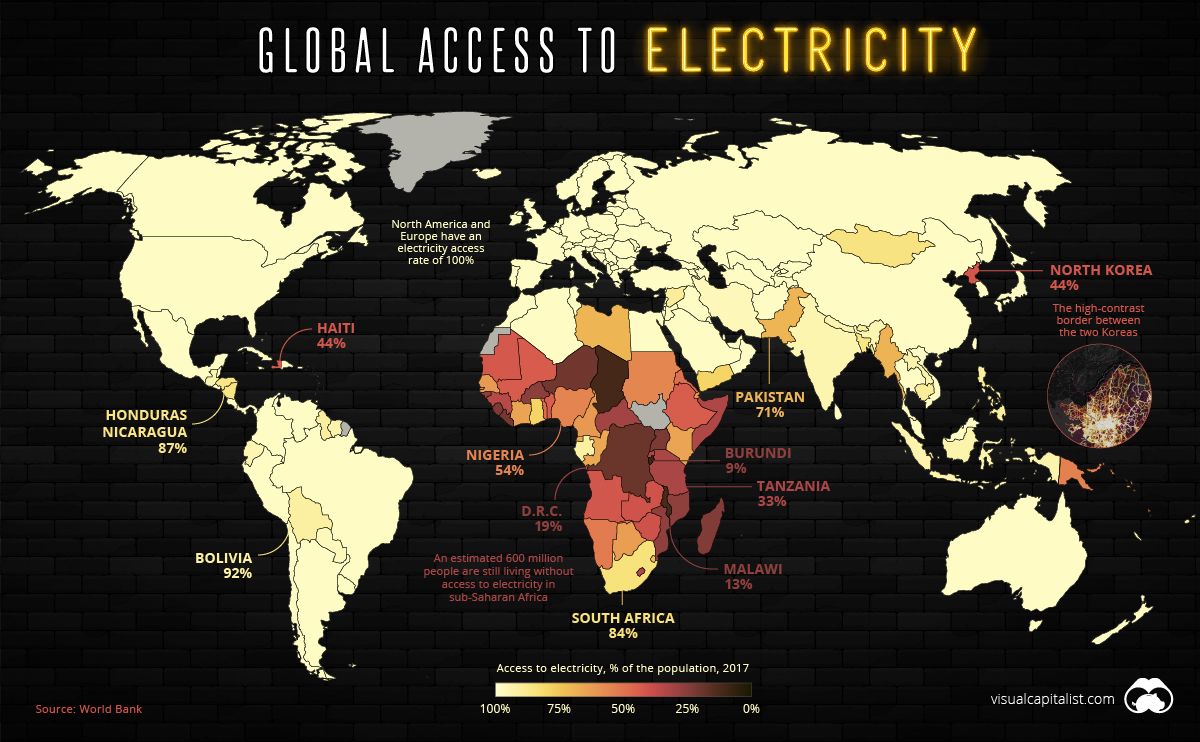
Why Renewable Energy?
Most of the efforts in electrifying rural Tanzania focus on the use of renewable energy rather than fossil fuels. Currently Tanzania’s main source of energy is from biomass, accounting for about 90% of the country’s total energy consumption. Most of the remaining energy consumption is generated from natural gas and oil that is used to produce electricity and is 100% imported from other countries (Lyimo, 2006). With the goal of electrifying rural Tanzania in mind, it is not realistic to be able to utilise fossil fuel resources to generate electricity for these areas. Energy from biomass and oil is generally produced on a large scale utilising huge facilities that are centralised near populated areas and transfer the energy via grid systems. Since the communities in rural Tanzania are spread so far apart and away from any large power plants, utilising biomass or fossil fuel facilities is not a viable option. Most commonly, energy is distributed through grid systems that are powered by these large power plants. In efforts of electrifying the rural part of Tanzania, it would be too costly to build grid systems that far from the facilities and it would also be too costly to build new power plants near the rural areas (Come Zebra et al., 2021). To overcome these limitations, the Tanzanian government and other organisations are focusing their efforts towards renewable energy, like solar panels, to achieve their goals.
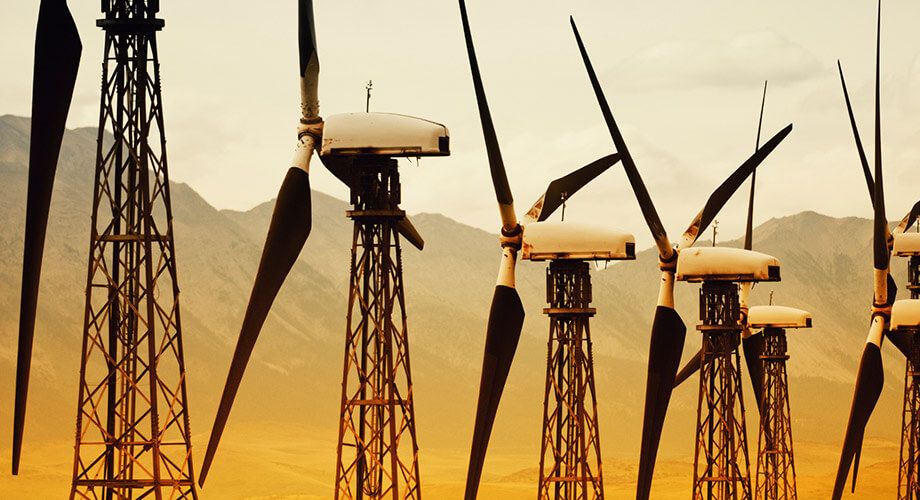
Renewable energy is a type of energy that is generated from natural resources that are constantly replenished -like sunlight, wind, rain or tides. It is especially useful in the quest to power Tanzania because the technology that is used to harness this energy often uses off-grid systems- meaning that they can generate electricity from anywhere their resources are available.
Solar panels and other solar technology is delocalized, meaning that they can be set up in any area and begin generating electricity to be used in that local area. It does not need to be connected to a large power plant or use a grid system to spread energy to different buildings. In most of the efforts to bring electricity to the distant areas of Tanzania, companies focus on the use of solar energy and providing solar technology to rural communities. With the extreme temperatures of Sub-Saharan Africa, it is common that there will be long periods of time that do not have rains or wind, mankind the use of rain power or wind power not completely reliable. For example, in 2003, 2006, 2009 and 2011, Tanzania along with the rest of Sub-Saharan Africa experienced a prolonged drought that had depleted the water reservoirs that generated the energy from hydropower plants, leading to severe power shortages and power rationing (Sarakikya, Ibrahim and Kiplagat, 2015). The experience from these severe droughts, is what drove Tanzania and other Sub-Saharan countries’ search for alternative renewable energy resources.
Therefore, it was concluded that sunlight is the best choice for alternative energy because it is a constant resource available to the people of this region and will meet energy needs at any geographical location.
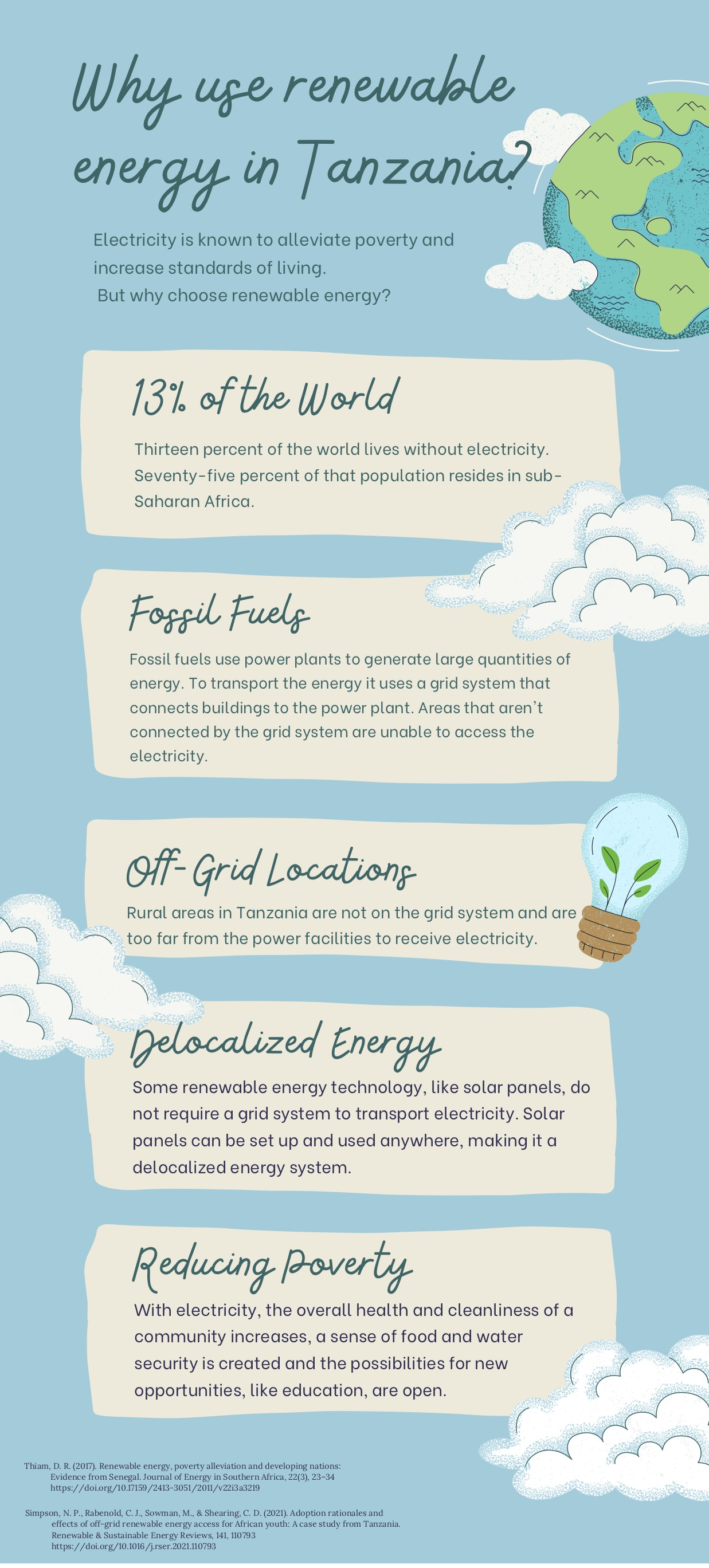
How does it alleviate poverty?
Many of the communities that reside in rural Tanzania without electricity are impoverished, with about 49% of the population living on less than $1.90 US a day, placing them well below the income poverty line (Simpson et al., 2021). Electricity can serve many purposes when being introduced to rural communities, allowing them light after the sun sets, providing fans for when it is hot, giving them new ways to cook besides open fire, etc. However, the largest impact providing energy to rural communities can have is allowing residents to utilise the electricity to generate income and promote financial stability within their families. Most residents in this area rely on farming for their livelihood so by providing energy to communities, businesses are able to ensure a steady income by utilising the energy to create a more efficient system and escape the tribulations of seasonal, unpredictable or casual employment. With electricity they are able to create businesses causing financial stability and increasing living standards in terms of hygiene and health service as well as creating new educational opportunities. These new freedoms can also provide a better sense of security in terms of food and water for whole communities, and are able to make accessing clean water easier and more consistent- increasing hygiene, health and reliability for farming.
Agricultural and Income Stability
Electricity can bring about agricultural, and therefore economic, stability to a community in several ways. In the case of drought, it runs the risk of bodies of water drying up, causing there to be no water for farming and growing crops, the main source of sustenance and income for most people. With electricity generating a reliable and constant source of water through the use of water pumps, there is never a risk of famine in an area of crops being unable to grow (Sarakikya, Ibrahim and Kiplagat, 2015). An example of this happening occurred in Malawi in 2001, where William Kamkwamba was able to build a wind turbine to pump water from the ground and use it for irrigation. During this time, there was a very severe drought in Malawi and many people were starving to death- rationing their food, eating one meal a day. Farmers were unable to generate any form of income so many children were forced to drop out of school and families were struggling all around. William Kamkwamba was fortunate enough to continue receiving an education, and from his physics books he was able to replicate a wind turbine made from scrap parts and old bicycle frames to generate electricity. With this electricity he pumped water from the ground and used it to irrigate his farmland saving his family and the community from starvation (Kamkwamba, 2009).
Additionally, electricity could bring about agricultural techniques and equipment, like irrigation systems and electric plows that will make the farming process easier and allow more time for other activities - such as education. Farming families will not require as much assistance from their children and will be able to generate a steady income to allow children to attend school. With the introduction of electricity, farming based-communities will be able to have a sense of security for income as well as open up new opportunities to explore other career paths. With a secure income, it will also allow for larger investments in healthcare or education that will overall improve the standard of living within a community.
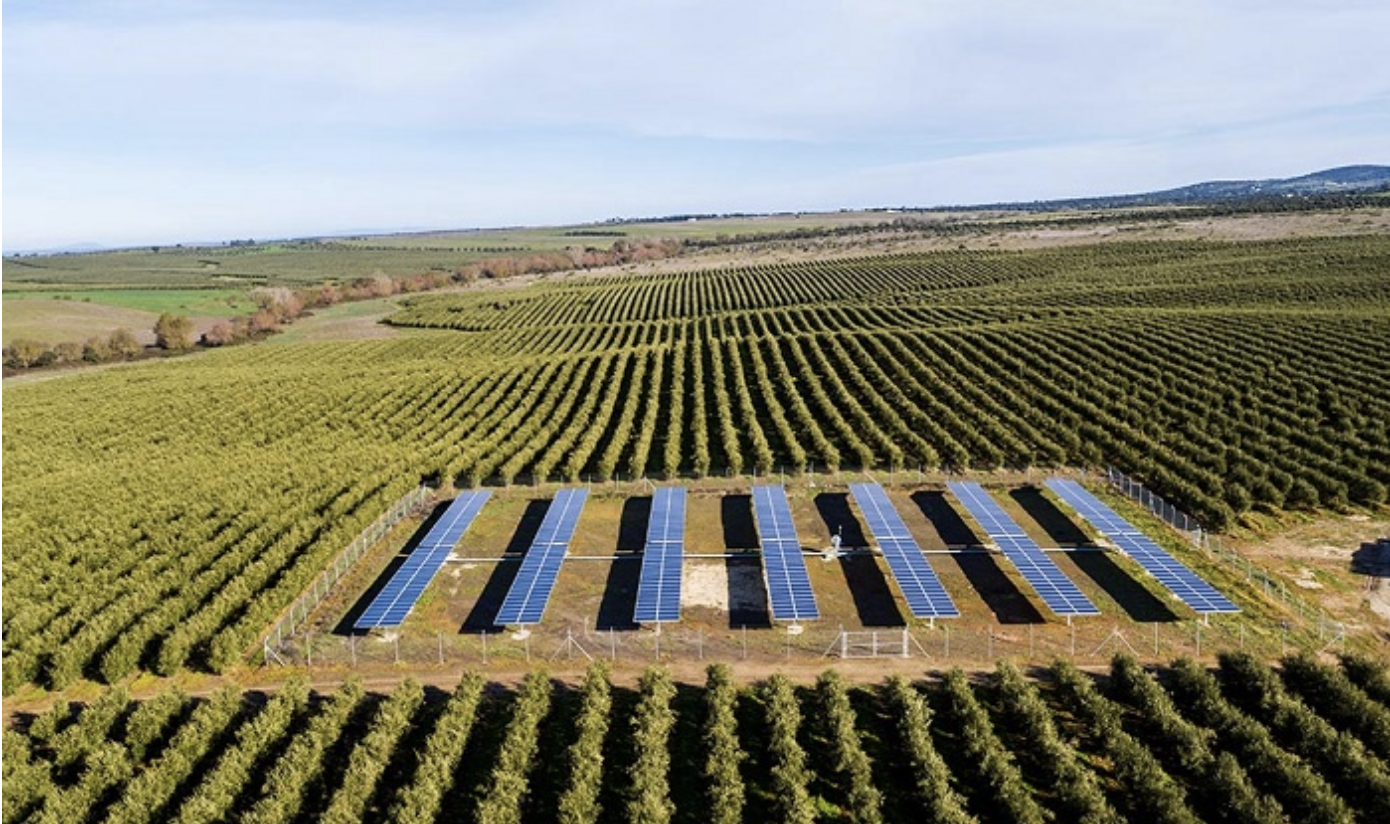
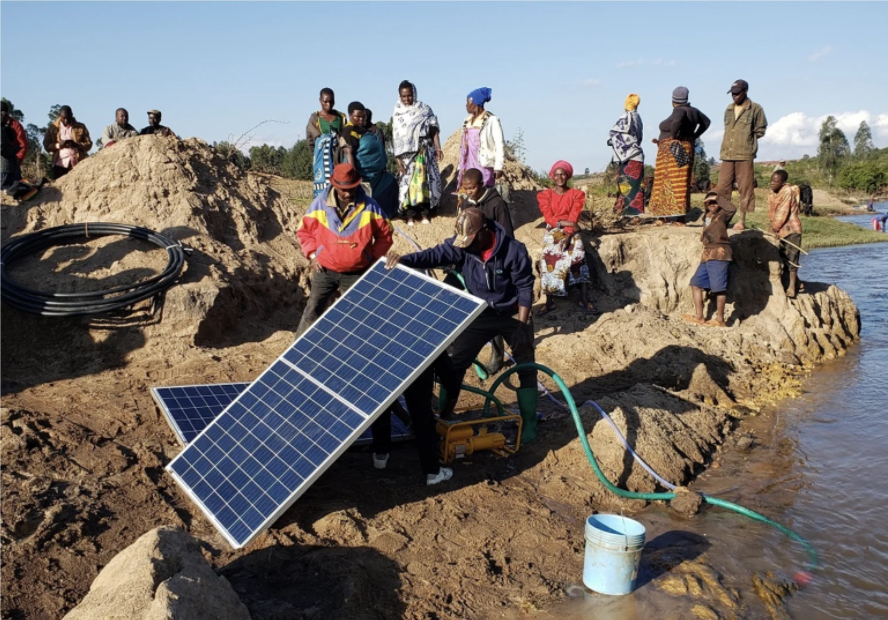
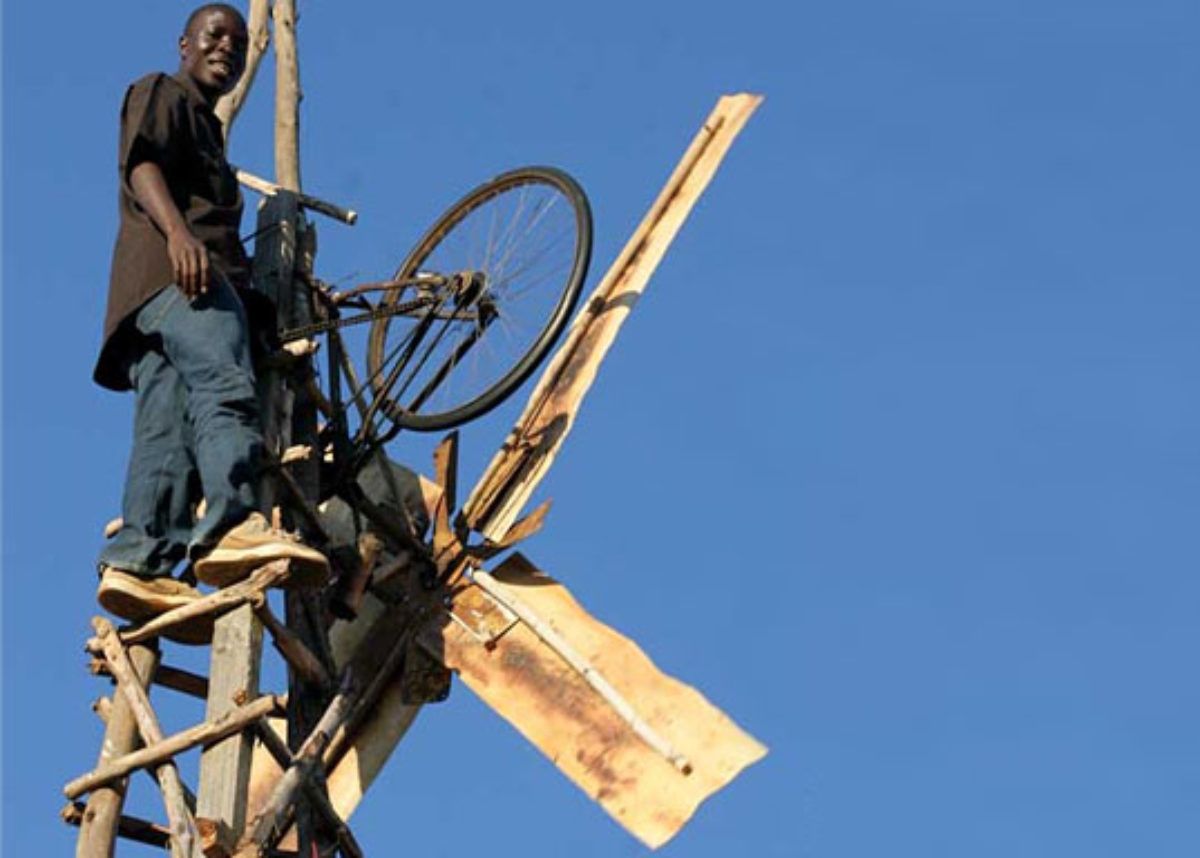
William Kamkwamba on his original windmill that he built to pump water for irrigation systems amidst severe Malawi drought causing famine
William Kamkwamba on his original windmill that he built to pump water for irrigation systems amidst severe Malawi drought causing famine
Clean Water
A key component of cleanliness, hygiene and sanitation is clean water. Along with irrigation systems for farms, pumps that bring water from the ground will also bring clean water to communities.
Many people in Tanzania rely on water found directly from local bodies of water, which can easily carry bacteria or be contaminated by outside forces. Another risk from relying on these bodies of water is that during the dry season in Africa there runs the risk of drought and losing access to water. With the use of energy, a pump can be built to extract water from the ground to provide constant access for a local community (Cloutier & Rowley, 2011). With saved income from an increased economy, residents can now buy water filters to ensure the water that is being consumed is clean and free of bacteria and other contaminants. The access to water allows for more frequent sanitation and an overall increase in cleanliness. By creating homes to be cleanlier and more sanitary, it reduces the risk of disease and infection to those living there. The access to water also allows better personal hygiene for the individual, furthermore contributing to their overall health.
Another issue that occurs often in Sub-Saharan Africa is the spread of disease from water sources. Giardia is a bacteria that lives in bodies of water that can be spread from ingestion of unsafe water and inadequate levels of cleanliness and sanitation. One of the main effects of giardia is extreme diarrhea, which can be extremely fatal without proper access to medical care to receive medication and without a reliable clean source of water. Therefore prevention is very important for these communities. Diarrhea is a major cause of death for children under the age of five (Squire, 2017). With the constant loss of water, an individual with giardia can very easily become dehydrated which can lead to death. Giardia can cause extreme weight loss and malabsorption which can cause stunting in growth and cognitive impairments in children still developing. With extreme risks of diseases such as giardia, it is very important to have clean living conditions and hygiene as well as having safe water. With electricity, these conditions are promoted and reduce the risk of endemics.
Healthcare
In these rural communities, the residents do not have access to health care facilities nor do they have access to transportation to get there. Many citizens with health conditions like HIV or diabetes are unable to access treatment because local hospitals are located miles away and they do not have very reliable medical instruments for at home monitoring. With the introduction of electricity, they will be able to afford to have more reliable medical instruments and be able to monitor their own health better at home. With a stable income, individuals will be able to afford communication devices like cell phones that can also provide a mode of communication with medical health professionals that will advise individuals who cannot physically go to see a doctor but will receive some guidance when addressing a physical ailment (Thiam, 2017).
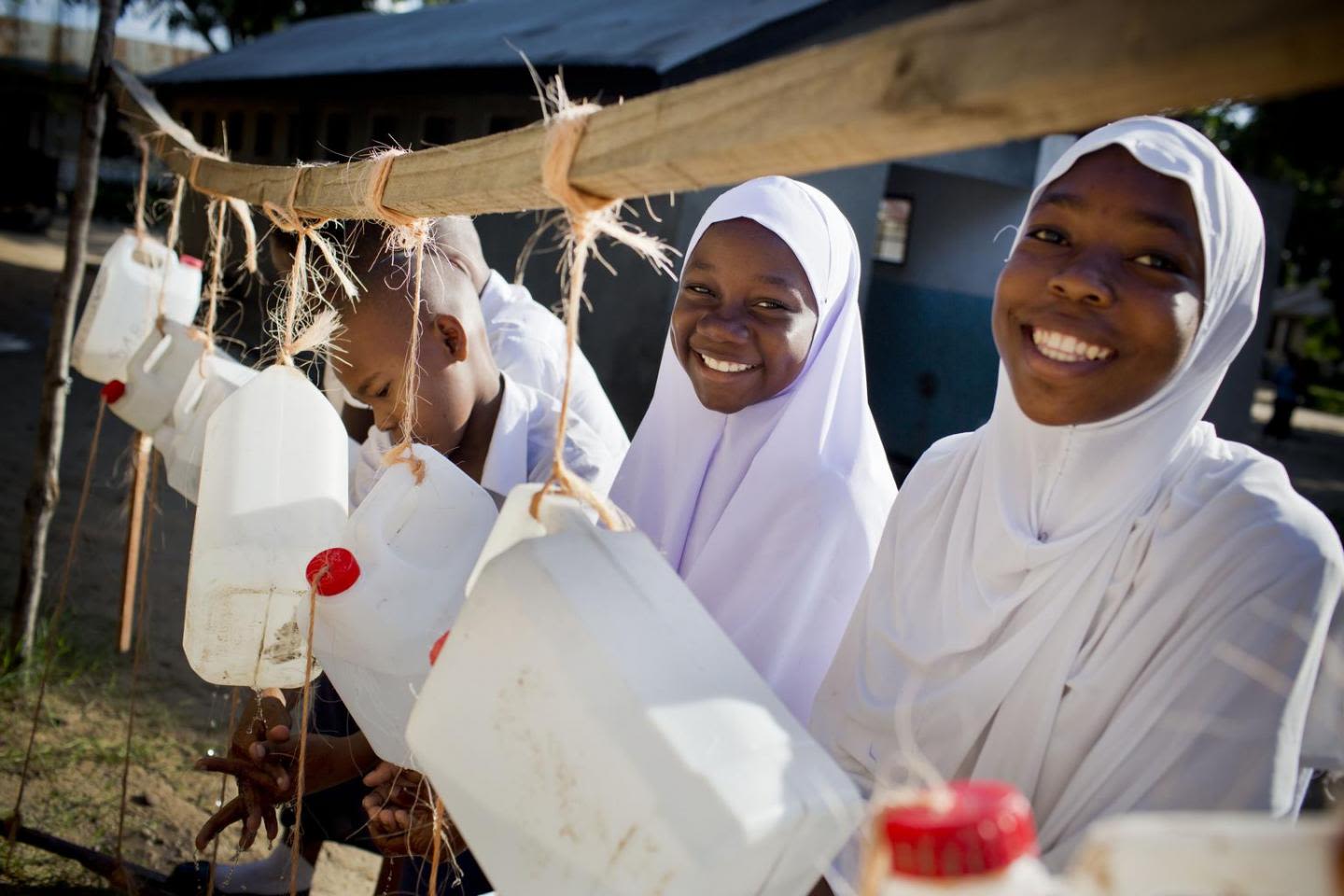
Sanitation station set up to promote hand-washing in Tanzanian village
Sanitation station set up to promote hand-washing in Tanzanian village
Additionally, the introduction of electricity will improve the overall health of these communities in general by increasing the overall cleanliness and hygiene of the citizens of that community. With access to clean water, hand washing and sanitation happens more frequently, reducing the risk to bacteria. Many homes in these communities are very simple and still have exposed dirt floors. With electricity, families will be able to afford to improve their houses and cement their floors, making residents less susceptible to bacteria and decrease the dirt inhalation that can damage one’s lungs or cause illness (Simpson et al., 2021).
Education
Arguably the greatest benefit that providing electricity can have is its positive effect on the education system for Tanzanian citizens. Many of the people in these communities are unable to send their children to school for several reasons- they may be needed to help with the farm, schools are too far away or they are not able to afford the school fees. With a stabilised income and more efficient farming techniques, children have a better chance of being able to receive an education (Gray et. al, 2018). Homes that are now provided with electricity also allow students to study at home after the sunset, improving their education and preparing them for higher education. With a strong educational background, students can continue to higher education where they can specialise in different fields that will develop the country and branch out from Tanzania’s primary income, agriculture. With Tanzania’s constantly growing population, it is imperative for the development of the country that the younger generations are being educated and are getting jobs to promote the economic and infrastructure growth of the nation. By promoting the education of young people, it ensures that the future generations of Tanzania will be able to develop and progress socioeconomically, politically and technologically, hopefully modernising the country as a whole (Gray et al., 2018).
Tanzania Residents’ Response
An enterprise called Sepon Limited has been providing solar energy to areas in rural Tanzania with the objective of creating jobs and bringing energy to the communities. The company allows young people to apply for an interest-free loan to pay for a solar photovoltaic system that needs to be paid back within a six-month period. If chosen, the company will send them a package of the solar technology that they can then set up to create a business with by either selling energy to community members directly, or using the solar system to enhance an already established system to promote jobs within the community. Between the years of 2019 and 2020, a qualitative case study was conducted to see the effects that these photovoltaic systems had on the residents and how they may have contributed to alleviating their previous struggles (Simpson et al., 2021).
There were 31 participants that were chosen for this case study, all of which have benefitted from the Sepon Limited program and have been using their solar technology with their business for at least five years. The researchers conducted interviews with each participant, from around June 2019 to March 22 ,that each lasted about 1-2 hours. All of the participants in this study had claimed that they believe their life has significantly improved since the adoption of solar technology, and have reported a greater ability to afford medical bills. Additionally, all respondents reported a lower burn risk due to alternative cooking methods that are now available instead of biomass, improving the lives of 100% of the women. Education was also proven to be improved upon according to 30 of the 31 respondents in the case study. Participants reported an overall improvement in their ability to send their children to school, improvement in the schools themselves, and improvement in the quality of their children’s education due to lighting that allows them to study during the night time. With the introduction of electricity, about 32% of respondents reported that they now have clean access to water because they were able to build a well to pump the water out. Other respondents also said that they were able to buy bottled water as well as water filters due to the new solar installation. With a new steady source of income, participants were able to begin saving up for larger investments. One respondent bought transportation devices that they used as another source of income by allowing community members to rent out the new devices. Another respondent says that they were able to save fo structural improvements on their homes and others reported being able expand businesses, buying more land and creating more jobs (Simpson et al., 2021). The responses that were collected in this case study demonstrate the ways that providing electricity to a community can largely affect the lives of its residents and how the usage of renewable energy in the rural parts of Tanzania contribute to the alleviation of poverty.
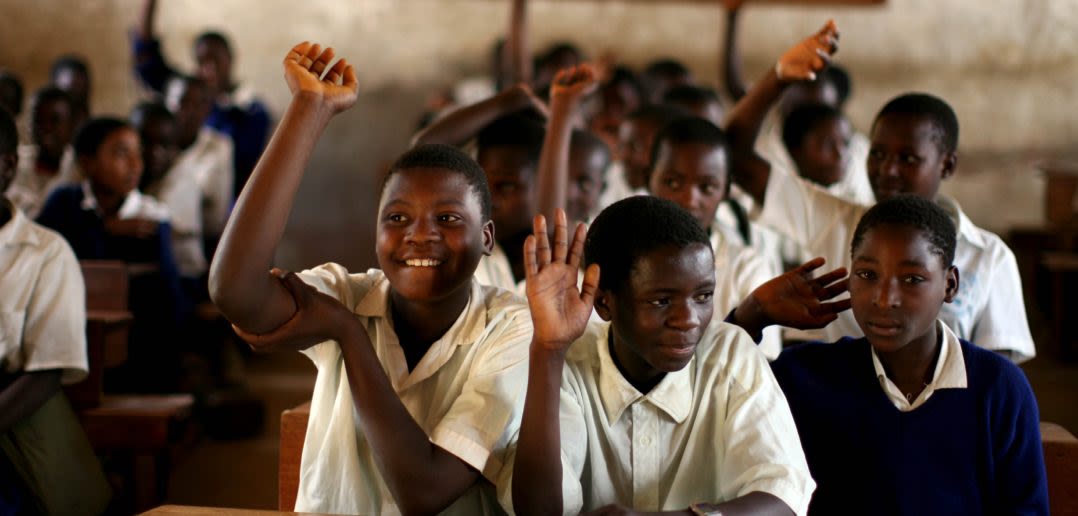
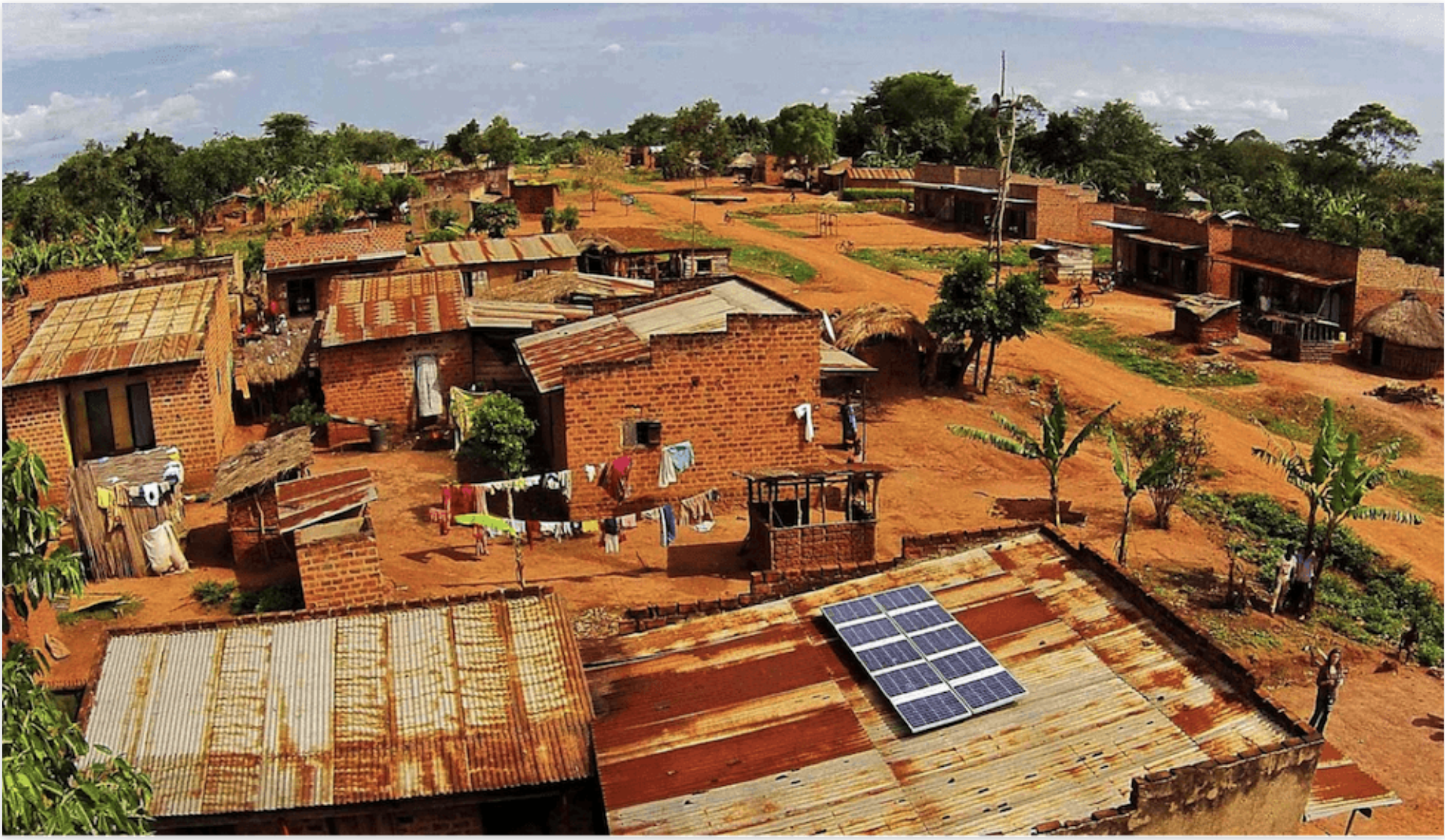

Progress
In the United Nations Sustainable Development Goals it provides a framework for recovery from the COVID-19 pandemic and expresses several goals that they want to achieve by the year 2030. In the Sustainable Development Goal 7, the United Nations express that they hope to achieve access to affordable, reliable, and modern energy resources for all people. They also aim to expand infrastructure and upgrade sustainable energy technology in all developing countries (Sustainable Development Goals (SDG 7), 2021). With these goals in mind, there are several organisations that are constantly working towards bringing electricity to the rural side of Tanzania.
The Borgen Project
In efforts to electrify rural Tanzania and bring some sort of electricity to homes of the people residing in these areas, several non-profit organisations have been formed to raise money to bring solar technology to these communities. One of these organisations is called The Borgen Project. The Borgen Project is known for helping countries in Sub-Saharan Africa combat issues like hunger, poverty, food security and mother survival. The company is constantly raising money and collecting donations to bring relief to countries in need and uses its platform to spread news about current issues that these countries are facing. By spreading the news of current issues, they promote other organisations that directly contribute to relief efforts as well as encouraging readers to take initiative and contact government officials (The Borgen Project, 2021).
SolarAid
Another organisation that also raises money for the cause of electrifying Sub-Saharan Africa is SolarAid. Founded in 2008, this company also collects donations and raises awareness for developing issues in African countries that it provides aid to. However, unlike The Borgen Project that focuses on many issues at once, SolarAid is dedicated to raising money in efforts of supplying solar technology to areas in need. The money that SolarAid raises goes to buying solar technology that is then not donated directly to the people, but rather supplied to local markets that are not able to access these technologies easily, allowing the beneficiaries to trade for these goods and having ownership over their lights.This allows people to not be in-debted to any large corporations and promotes socio-economic growth for people in these areas. Over the course of the 13 years, however, SolarAid has become one of the main sellers of solar lights in Africa allowing clean light to be available to even remote rural areas of Africa (Solar Aid, 2021).
Tanzania Renewable Energy Association
One of the most influential organisations for this movement to electrify Tanzania is the Tanzania Renewable Energy Association (TAREA). TAREA provides multiple services. Just as the two organisations mentioned above, TAREA raises money and provides solar technology to rural communities in efforts to alleviate poverty. Additionally, they provide training on Solar PV Technology and have trained hundreds of Solar PV technicians to promote the expansion of solar technology in Tanzania. The association also spreads awareness and information on solar energy to those in the country through the radio and warns against faulty or poor quality solar products to the public to ensure that citizens are obtaining the durable and quality energy systems. TAREA provides training and information on how to identify counterfeit solar energy products and ensures that the people know how to use their own machinery to its maximum efficiency. Additionally, they conduct solar technology research and study what can be improved to maximise a positive effect on the residents of the area. One of TAREA’s biggest accomplishments was a reform proposal for renewable energy taxes that led to a tax waiver on solar and wind energy products and components. This causes the cost of solar technology to reduce causing it to become more accessible to the general public. The association is actively involved in Tanzania policy making and tries to ensure that the laws that the government makes are fair and in the best interest of bringing energy for the country’s citizens (Tanzania Renewable Energy Association, 2021).
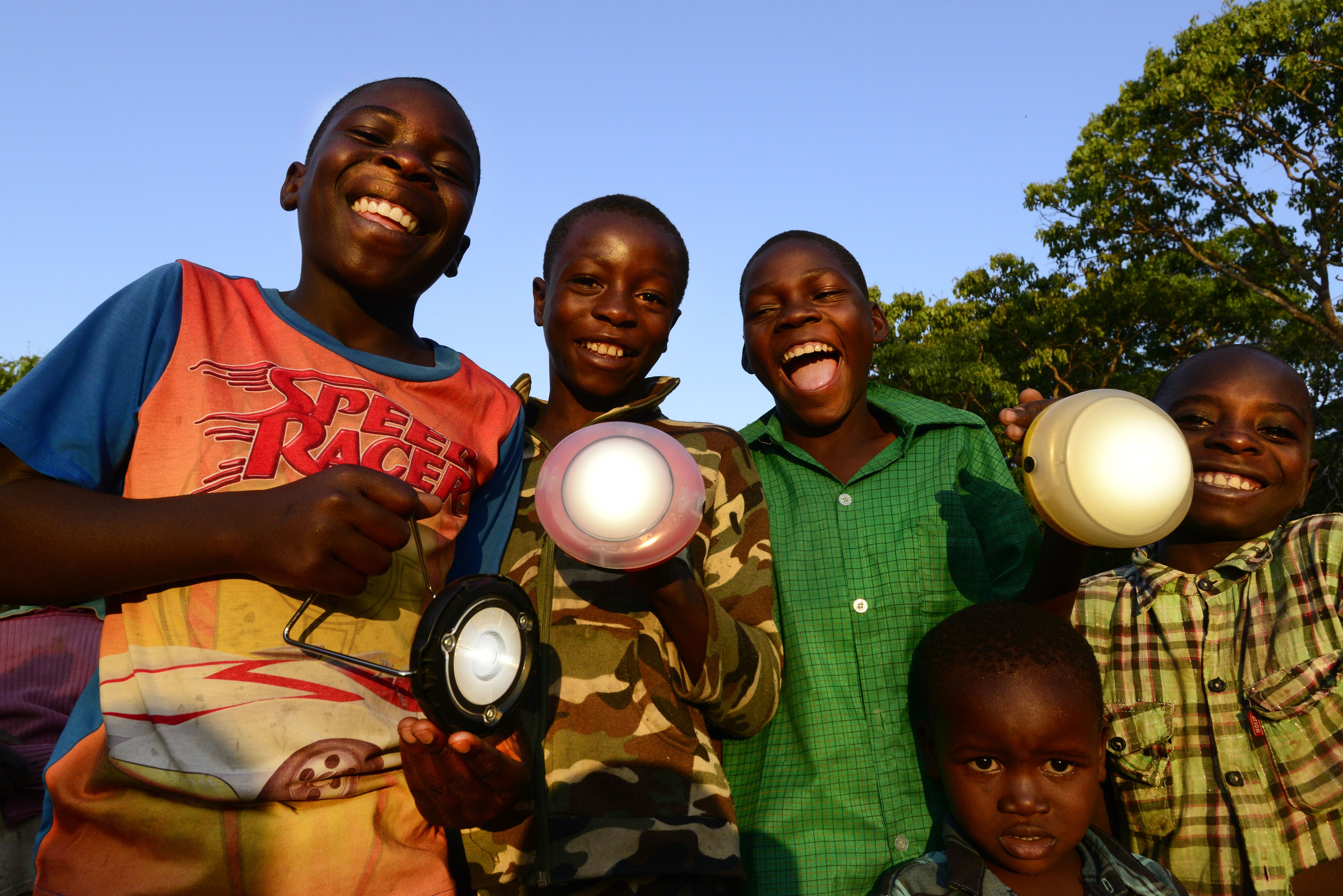
Setbacks & Solutions
With all movements, there are always setbacks and obstacles that prevent progress from moving forward. In the movement for electrification across Tanzania, some of the main problems that are being faced are lack of funding, foreign policies, and potential environmental harm from e-waste.
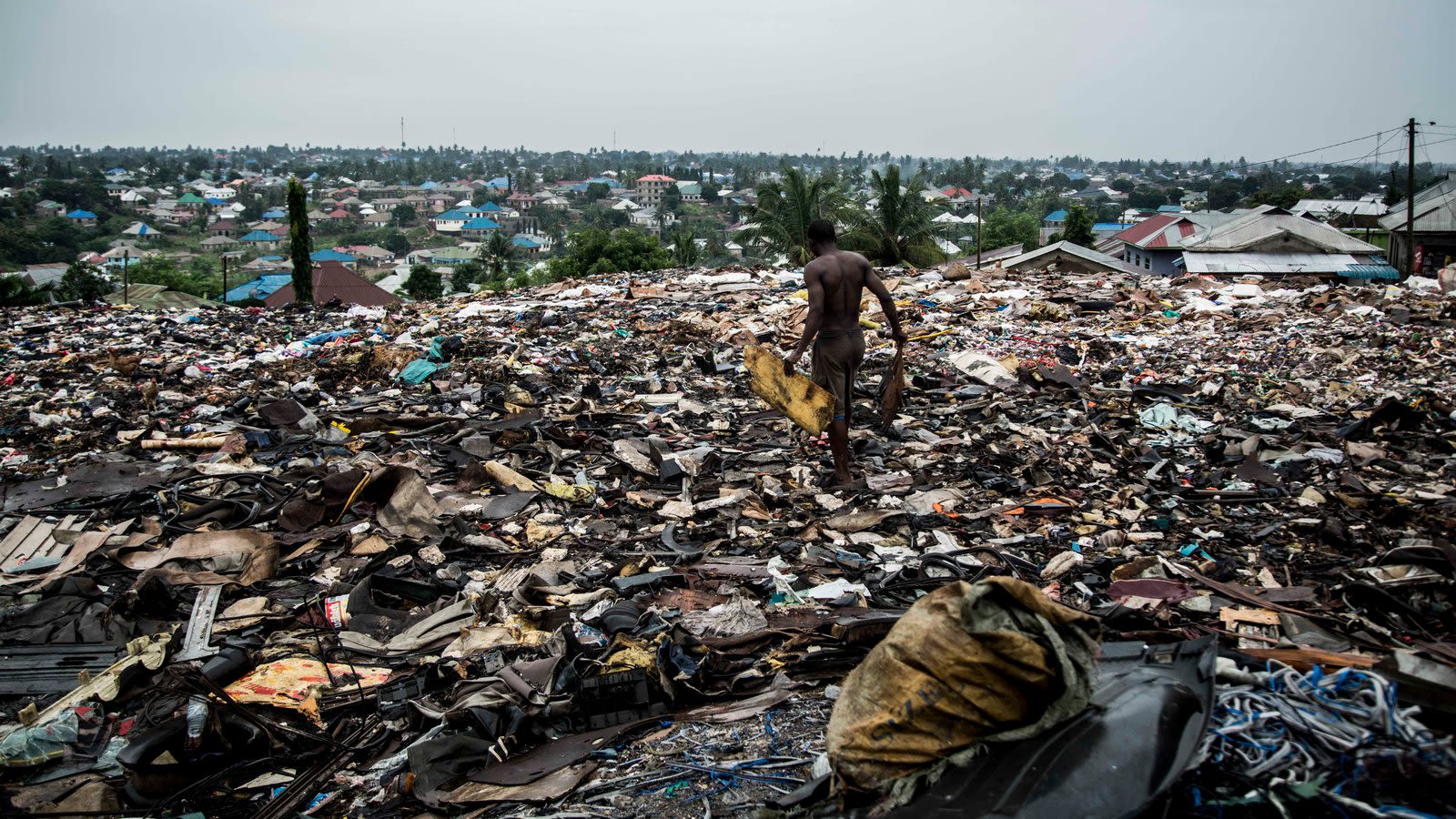
Landfill on the outskirts of an urban city in Tanzania
Landfill on the outskirts of an urban city in Tanzania
Financial Investors
In order to provide electricity to rural Tanzania, there comes the issue of funding and finding financial investors to aid these movements. The solar technology that is the hex of this movement are not sourced in the country, but rather need to be imported from various other countries which can be very expensive. Many potential investors fail to see economic success in this type of project and do not feel secure in investing because of Tanzania’s outdated banking system (Gregory & Sovacool, 2019). Because Tanzania is very behind in terms of technology and infrastructure compared to the modern world, their banking system is also not modernised and outdated. With the lack of electricity, many citizens of the country do not have access to online banking making the payments for these technologies less reliable and more troublesome. Additionally, the lack of online paying systems means that there is no reliable way for pay-as-you-go systems . The payments would have to be all at once, which can be costly and not feasible for some individuals. With the lack of modern banking systems, investors do not feel as if this would be a sound investment.
The best way to combat this issue would be to first update Tanzania’s banking systems. Without a sound financial system, investors would not be able to ensure that they made a sound investment or that they will see their money back. However, although this is very important, this is a difficult obstacle to overcome because updating the banking system also relies on electricity access to the residents of the given area (Gregory and Sovacool, 2019). Modernising the banking system may also take years to accomplish, and with the ever-developing western world, will make Tanzania even more behind. Another solution would be to provide investors more incentives to invest in solar technology for rural Tanzania.
Foreign Policy
Another setback that the electrification movement is facing is foreign policies placed by the government that are hindering importation of parts for solar technology. Policies, or lack of, are prohibiting the trade between major source countries like China that provide many of the parts used for the solar panels, making it difficult to provide them for rural Tanzania. Integration of PV solar systems and mini grids are being blocked due to the lack of transparent and distinguished policies that set up a regulatory framework for technology development (Come Zebra et al., 2021). Additionally, many foreign countries like the United States, United Kingdom and China keep Tanzania out of the major trading in order to monopolise their own market, making the country unable to economically succeed in the agricultural industry. This prohibits income that could be used and put towards movements to bring electricity to all parts of Tanzania.
E-Waste
Another reason why investors may feel unsure about investing is because of the long term implications for the environment. With an increase of solar technology, there will also cause an increase in e-waste that can be hazardous to the environment without proper disposal. A large concern that is growing in Tanzania is trash disposal and its complications because of the increasing use of electronic waste. E-waste includes everything from computer monitors to television sets, cell phones, etc. A contributor that is slowly adding to this problem are solar panels. Global initiatives are promoting the spread of solar panels in Tanzania to help electrify the rural areas and bring electricity to the residents in that area. Like any piece of technology that is constantly exposed to the elements, solar panels are bound to either become out-dated or break from external forces, causing them to be discarded and contributing to the accumulation of e-waste (Yee, 2019). Additionally, many solar energy products rely on lead-acid batteries and lithium batteries for operation. These batteries do not last very long- only about 8-10 years, and without a proper way to dispose of them, the risk of the leaking into the environment and harming the residents in the area increases.
Although bringing electricity to the rural areas of Tanzania is an important movement for the residents of the country, it must be taken into consideration the long term negative effects on the environment- despite being a renewable energy source. In the past few years, the formal garbage collection in the urban parts of Tanzania has improved but not enough to the extent to properly dispose of e-waste. Many times, the e-waste is just stored in warehouses or scavenged for recyclables and inevitably dumped. The waste management companies in the area do not have any training for employees to deal with hazardous materials and many regions lack the facilities and equipment to properly dispose of the waste in general.
With the growing solar industry boom in Tanzania and several initiatives to bring power to the rural areas, the problem with disposing of hazardous material is only increasing. The United States’s Power Africa Initiative plans to bring about 25 million to 30 million new solar connections across Sub-Saharan Africa by 2030. As the industry begins to boom, it is imperative that proper disposal of components can be achieved. If expired lead acid batteries leak into the ground it can contaminate the soil and get into the water that communities rely on for survival. This poses a very large threat on the general health of the residents, especially those in rural areas that do not have reliable access to health professionals and must rely on these possibly poisoned bodies of water for survival.

Open exposed land-fill on the coast of Tanzania
Open exposed land-fill on the coast of Tanzania
To combat this growing concern, the US and the UK have pledged $1 million in grants to companies addressing solar e-waste in sub-Saharan Africa. The lack of proper ways of disposing e-waste has also become a great concern for investors of solar energy initiatives. However, just as this incentive is coming as a result of the solar energy boom in Tanzania, it is also proving to be a turn-off for possible investors. Without proper waste management, many companies see the continuation of these initiatives as a risk that can cause more harm than good long-term. As the movement to bring power to the rural areas of Tanzania continues, the environmental and health risks of solar panel technology must be taken into account.

Is Renewable Energy Enough?
The movement to bring electricity to the rural regions of Tanzania is making great strides to accomplishing its goals, but is it enough to stop with renewable energy? To achieve the UN’s goal of ending energy poverty, the residents must meet the modern definition for electricity access which is about 50-100 kW per person per year. This amount of energy is equivalent to charging a mobile cell phone or powering a few lightbulbs for a couple of hours. That being said, this threshold is very low and is not nearly sufficient enough to drive economic growth (Moss, 2021). With these values being so low, it raises the questions: Will the government stop there? Once everyone reaches this very low standard of having electricity, will the support stop? With the UN’s Sustainable Growth Development Goals now in place, there are proposals to increase the threshold of this modern definition to 1000 kW per person per year, which is about the amount an average US household consumes in one month. This amount of energy will ensure that there is enough energy consumption to promote economic and infrastructural growth within communities (Moss, 2021).
One of the largest concerns of the world today is curbing climate change and reversing the impacts of global warming. Anthropologists have studied the relationship of societies and energy and the effects of climate change and what will happen when resources start to deplete. Throughout the analyses of globalisation it shows that as the world develops cultures and institutions of the world’s nations are becoming more interdependent of each other (Kurtz & Fustes, 2012). With the threat of climate change and depletion of fossil fuels, it is hypothesised that the lack of available energy will affect social and cultural norms within and between nations. With ample amounts of energy, the promotion of trade and collaborative efforts is seen between different countries, but if energy becomes a scarcity and they are made to compete against each other for it, relationships can fall. That is why it is important to be able to find alternative sources of energy that are sustainable, renewable, and able to create copious amounts of electricity to replace fossil fuels (Kurtz & Fustes, 2012). In Tanzania, the first stepping stone of converting to renewable energy is providing solar technology to every community across the country. But is it fair to limit developing countries to renewable energy resources? Many see using renewable energy to develop Africa as a great opportunity to move towards greener technology, but is it fair to limit their progress by limiting their energy consumption? Tanzania in terms of economy and infrastructure is very behind compared to the rest of the modern world, and with the current renewable technology that is available it will never be able to generate enough power to allow the country to catch up. Currently, much of Tanzania’s resources are imported from other countries and they are reliant on them for technological advancements. In order for Tanzania to progress towards the modern world, they need to start becoming self-reliant and building up their infrastructure. In order to do this, they need to generate large amounts of energy using power plants from either fossil fuels or another energy source to create factories, produce steel, etc. With the current efficiency of renewable technology, it will be difficult to achieve the amount of energy that is required to reach these goals, however with future development it is not impossible. It is not fair to limit developing countries from using energy systems that have helped modern world technology get where it is today, however it is essential that Tanzania finds ways to rely on a renewable energy source to create a sustainable future (Dove & Kammen, 2015). In the meantime, instead of limiting developing countries like Tanzania to limit themselves to a limited technology, countries like the United States, China and the United Kingdom, that have astronomically higher energy consumption rates need to reduce the amount of carbon waste that they emit and be conscientious of the electricity that they consume.
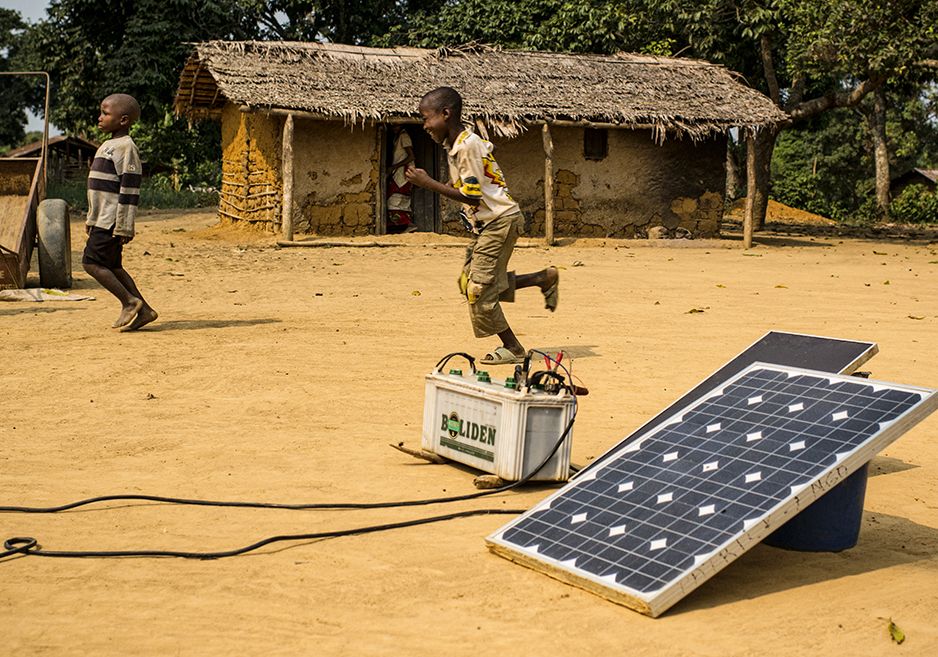


Rose Mutiso's TED Talk from 2019 on "How to Bring Affordable, Sustainable Electricity to Africa"
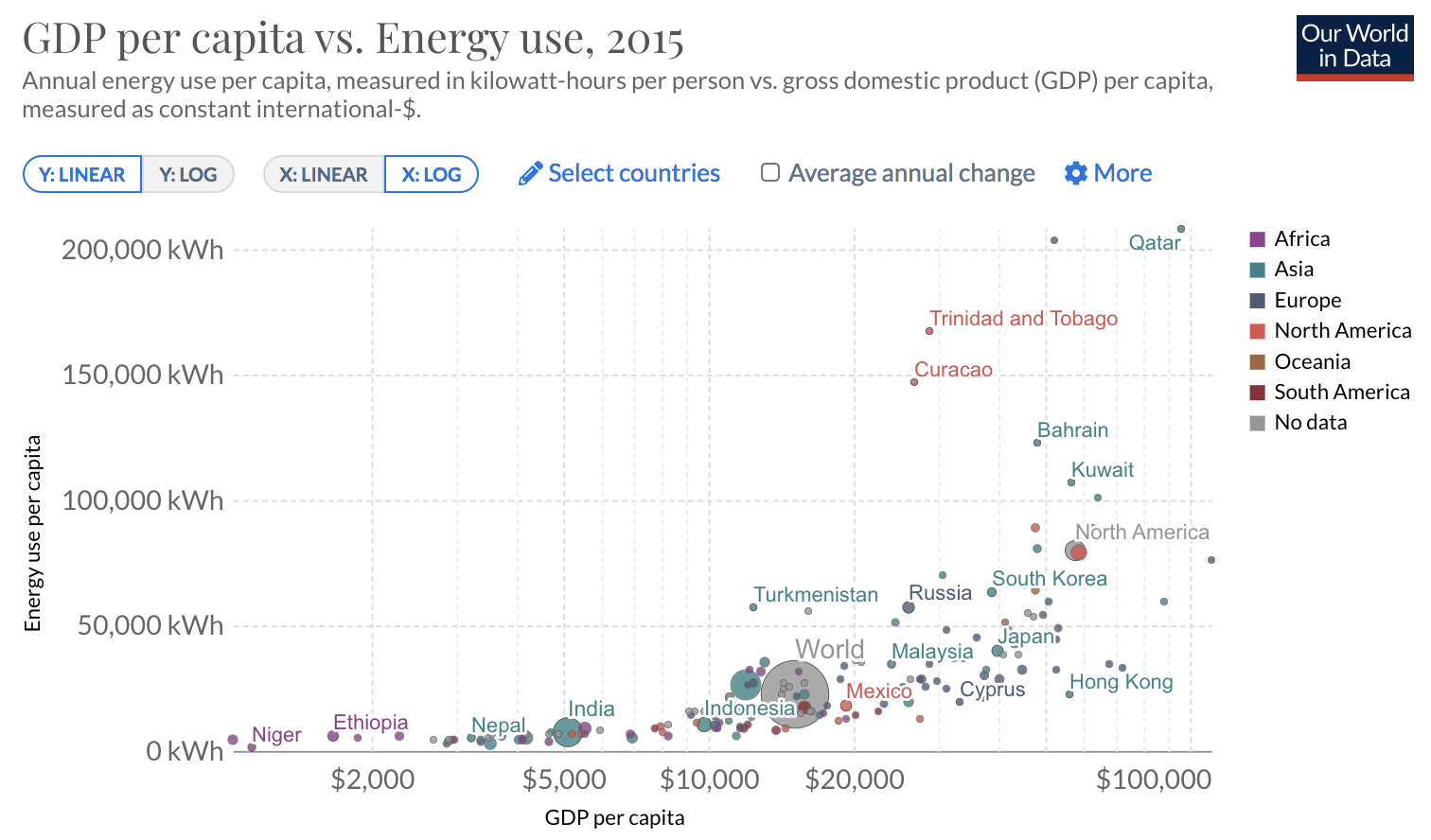
GDP per capita v. Energy consumption per capita graph from data collected from multiple sources in 2015 by World Bank
GDP per capita v. Energy consumption per capita graph from data collected from multiple sources in 2015 by World Bank

In a TED talk by Rose Mutiso, a Kenyan energy researcher that works with a global network in finding solutions for energy deficits in Africa, she discusses the use of renewable energy sources in bringing electricity to homes across Africa. She addresses SDG7 and discusses how even in reaching this goal, it would not be enough to bring Africa out of energy poverty. Bringing lightbulbs and fans to each home in Africa is a great start, but as Mutiso says it is “romanticising solutions that distract us from the core challenges”. To begin to end energy poverty, an ample amount of reliable and affordable electricity must be delivered to power income growth and power economy-wide job creation (Mutiso, 2019). It must be provided to industries that will build the infrastructure of the country, to the developing cities full of young people with potential search for jobs, to more than just housing. Although bringing off-grid electricity to homes in Africa is a great place to start, by itself, it is by no means able to rid Tanzania of its energy poverty crisis. By definition of SDG7, the government is focused on bringing energy to the homes of every citizen in the world, but for countries like Tanzania to develop, there must also be a focus on the industrial and commercial sectors of energy consumption.
As seen in the figure to the left, there is a positive correlation between electricity consumption and income per capita - there is no such thing as a low-energy, high income country. In order for a nation to grow economically to accommodate its growing population, a strong infrastructure must be developed to promote job creation and modern societal advancement. With Africa’s opportunity to build their energy systems almost from scratch, it is a great opportunity to build using renewable resources. However, even in the modern world with its developments of solar panels and electric cars, these advancements to promote renewable energy were built with a strong centralised power source generated by fossil fuels (Mutiso, 2019). Therefore, in efforts to curb climate change, it is imperative that renewable energy efficiency is increased and that researchers find a way to be able to produce ample and reliable renewable electricity that these nations can use at the crux of its energy consumption to create a sustainable way to develop their nation.
In the past 250 years, the world has significantly depleted earth’s resources that took 3.5 billion years to create. At the rate of consumption for energy today, it will not take another 250 years for all fossil fuel resources to be completely gone (Kurtz & Fustes, 2012). That is why, even though it is not fair to limit developing countries from utilising fossil fuel resources, it is imperative that Tanzania and other sub-Saharan African countries find reliable and ample renewable resources to base their energy systems in order to outlast the world’s disappearing fossil fuels. That being said, as important as it is to curb climate change and lessen global warming “the world cannot expect Africa to remain in energy poverty because of climate change” (Mutiso, 2019). A balance must be found between both struggles.
Conclusion
Although there are many obstacles that may block the way, providing electricity via solar energy to rural Tanzania is the step in the correct direction for alleviating poverty in those areas as well as developing the country as a whole. With access to electricity, the standard of living for people in those areas will dramatically increase, providing them better access to health care, clean water, and food stability. By bringing even some electricity to rural households, it will already increase cleanliness and hygiene for families living there and make it possible to alleviate poverty as a whole. There are currently many organisations and projects that are funding the movement to bring solar technology to rural areas and promote laws and policies that endorse ending energy poverty in the country. Problems with e-waste and funding are points of concern when considering this movement, however, the advantages of bringing electricity to all households outweighs the risk.
Renewable energy is a great starting point for Tanzania. It will bring great relief to impoverished areas in the rural regions and allow for progress in the country. However, the progress cannot stop there. Despite international efforts to begin relying on renewable energy, Tanzania will need to either use some fossil fuels in order to catch up to first-world countries, or renewable energy needs to advance to be ample enough and reliable enough to allow Tanzania to continue to grow as a country. With fossil fuels depleting at exponential rates, it is indisputable that Tanzania will need to use some sort of renewable energy for its main energy source in order for their energy system to outlive the dying reservoirs of oil and natural gas. Solar energy and the use of renewable energy is still a new and developing technology that is not yet as efficient as fossil fuels, but in order to create a sustainable future for energy in Tanzania, it will need to become more efficient to provide for the growing country’s needs.
The movement to end energy poverty in Tanzania and in the world has been an on-going struggle for years. Although it will take much more than the current delocalised energy technology that there is today to completely modernise Tanzania’s infrastructure and boost the country’s economy, the steps that are being taken today to bring electricity to every home is a great start. Energy is allowing families to create stable incomes and open themselves to new opportunities for advancement, while improving their overall health and increasing their standards of living. With the introduction of solar energy to these homes, it promotes the population’s knowledge on the technology and provides motivation to seek for further advancements that will further develop the socioeconomic conditions. Not only does the introduction of solar energy to rural areas in Tanzania prove to have instant positive effects on alleviating conditions of poverty, but it also provides the information and starting tools needed for communities to begin to end energy poverty, and poverty in general, throughout the nation.

References
Come Zebra, E. I., van der Windt, H. J., Nhumaio, G., & Faaij, A. P. C. (2021). A review of hybrid renewable energy systems in mini-grids for off-grid electrification in developing countries. Renewable and Sustainable Energy Reviews, 144, 111036. https://doi.org/10.1016/j.rser.2021.111036
Cloutier, M., & Rowley, P. (2011). The feasibility of renewable energy sources for pumping clean water in sub-Saharan africa: A case study for central nigeria. Renewable Energy, 36(8), 2220–2226. https://doi.org/10.1016/j.renene.2010.12.019
Dove, M., & Kammen, D. (2015). Science, Society and the Environment. Routledge. https://doi.org/10.4324/9781315880396
Gray, L., Boyle, A., Francks, E., & Yu, V. (2018). The power of small-scale solar: gender, energy poverty, and entrepreneurship in Tanzania. Development in Practice, 29(1), 26–39. https://doi.org/10.1080/09614524.2018.1526257
Gregory, J., & Sovacool, B. K. (2019). Rethinking the governance of energy poverty in sub-Saharan Africa: Reviewing three academic perspectives on electricity infrastructure investment. Renewable & Sustainable Energy Reviews, 111, 344–354. https://doi.org/10.1016/j.rser.2019.05.021
Kamkwamba, W. (2009). William Kamkwamba: How I harnessed the wind | TED Talk. In TED. Retrieved December 8, 2021, from https://www.ted.com/talks/william_kamkwamba_how_i_harnessed_the_wind
Kurtz, D. V., & Fustes, M. (n.d.). Globalization and Energy: An anthropological perspective. Retrieved December 23, 2021, from https://www.socionauki.ru/journal/files/jogs/2014_2/019-038.pdf
Lyimo, B. M. (2006). (rep.). Energy and Sustainable Development in Tanzania (pp. 2–11). Helio International Tanzania.
Mutiso, R., 2021. How to bring affordable, sustainable electricity to Africa. [video] Available at: <https://www.ted.com/talks/rose_m_mutiso_how_to_bring_affordable_sustainable_electricity_to_africa> [Accessed 22 December 2021].
Routley, N. (2020, June 17). Mapped: The 1.2 billion people without access to electricity. Visual Capitalist. Retrieved December 8, 2021, from https://www.visualcapitalist.com/mapped-billion-people-without-access-to-electricity/.
Sarakikya, H. (2015). Renewable energy policies and practice in Tanzania: Their contribution to Tanzania Economy and Poverty Alleviation. International Journal of Energy and Power Engineering, 4(6), 333. https://doi.org/10.11648/j.ijepe.20150406.12
Simpson, N. P., Rabenold, C. J., Sowman, M., & Shearing, C. D. (2021). Adoption rationales and effects of off-grid renewable energy access for African youth: A case study from Tanzania. Renewable & Sustainable Energy Reviews, 141, 110793–. https://doi.org/10.1016/j.rser.2021.110793
SolarAid. 2021. Trade not aid. [online] Available at: <https://solar-aid.org/the-power-of-light/trade-not-aid/> [Accessed 9 December 2021].
Tanzania Renewable Energy Association. (n.d.). Www.tarea-Tz.org. Retrieved December 22, 2021, from https://www.tarea-tz.org/
The Borgen Project. (2019). The Borgen Project. https://borgenproject.org/
Thiam, D. R. (2017). Renewable energy, poverty alleviation and developing nations: Evidence from Senegal. Journal of Energy in Southern Africa, 22(3), 23–34. https://doi.org/10.17159/2413-3051/2011/v22i3a3219
United Nations Western Europe. 2021. Sustainable Development Goals (SDG 7) | United Nations Western Europe. [online] Available at: <https://unric.org/en/sdg-7/> [Accessed 9 December 2021].
Yee, A. (2019). Electronic Marvels Turn Into Dangerous Trash in East Africa. The New York Times. https://www.nytimes.com/2019/05/12/climate/electronic-marvels-turn-into-dangerous-trash-in-east-africa.html
Mediography
Solar Panel for irrigation system in Tanzanian farm. (n.d.). Elic Foundation. Retrieved December 9, 2021, from https://elicofoundation.org/solar-powered-irrigation-systems-transforming-smallholders-farming-practices-in-rural-tanzania/.
World Bank. (2019). Global Access to Electricity. Visual Capitalist. Retrieved December 22, 2021, from https://www.visualcapitalist.com/mapped-billion-people-without-access-to-electricity/.
Windmills in mountainous area. (n.d.). SGS. Retrieved December 22, 2021, from https://www.sgs.co.tz/en/energy.
Mohamed, A. (2018). Solar photovoltaic system energy farm in field. Pumps Africa. Retrieved December 22, 2021, from https://pumps-africa.com/positive-prospects-solar-powered-irrigation-systems/.
Solar panel used for pumping water from body of water. (n.d.). Elic Foundation. Retrieved December 9, 2021, from https://elicofoundation.org/solar-powered-irrigation-systems-transforming-smallholders-farming-practices-in-rural-tanzania/.
How I harnessed the wind. (2009). TED. Retrieved December 23, 2021, from https://www.ted.com/talks/william_kamkwamba_how_i_harnessed_the_wind.
Solar Pumping: A Cheaper and Cleaner Way to Access Groundwater. (2016). WorldBank. Retrieved December 23, 2021, from https://www.worldbank.org/en/topic/water/brief/solar-pumping.
United Republic of Tanzania. (n.d.). Young school children washing hands at sanitation station. UNICEF. Retrieved December 22, 2021, from https://www.unicef.org/tanzania/what-we-do/wash.
CAMFED. (2017). Students in Iringa, Tanzania. Humanosphere. Retrieved December 22, 2021, from https://www.humanosphere.org/human-rights/2017/02/multiple-barriers-keep-1-5-million-tanzanian-kids-out-of-secondary-school/.
Luke, R. (2016). Village with installed solar photovoltaic roof systems . Energysage. Retrieved December 22, 2021, from https://news.energysage.com/solar-energy-news-solar-power-helping-pregnant-african-women/.
SolarAid. (n.d.). Children with solar technology devices smiling. SolarAid. Retrieved December 22, 2021, from https://www.icapcharityday.com/success-stories/2013-solaraid.
Nkinzingabo, J. (2019). A garbage heap in Dar es Salaam, Tanzania. The New York Times. The New York Times. Retrieved December 22, 2021, from https://www.nytimes.com/2019/05/12/climate/electronic-marvels-turn-into-dangerous-trash-in-east-africa.html.
Zacharia, A. (2018). Heap of garbage and electronic waste on the coast of Tanzania. All Africa. The Citizen. Retrieved December 22, 2021, from https://allafrica.com/stories/201811180020.html.
Matthews-Green, S. (2017). Solar farm in field in Tanzania rural side. Mining Review Africa. Mining Review Africa. Retrieved December 22, 2021, from https://www.miningreview.com/magazine-article/rental-solar-power-redavia-pioneers-fit-purpose-solar-solution-tanzania/.
Girard, O. (2018). Solar cell charging a batter in Lukolela, Democratic Republic of Congo. Stockholm Environment Institute. Retrieved December 22, 2021, from https://www.sei.org/publications/powering-africa-unlocking-opportunities-energy-development/.
Fairley, P. (2021). Woman standing by solar photovoltaic panel watering plants. IEEE Spectrum. Retrieved December 22, 2021, from https://spectrum.ieee.org/offgrid-solars-killer-app.
Mutiso, R. (2019). How to bring affordable, sustainable electricity to Africa. TED. Retrieved December 23, 2021, from https://www.ted.com/talks/rose_m_mutiso_how_to_bring_affordable_sustainable_electricity_to_africa.
World Bank. (n.d.). Gdp per capita vs. Energy use, 2015. Our World in Data. Retrieved December 22, 2021, from https://ourworldindata.org/grapher/energy-use-per-capita-vs-gdp-per-capita?time=2015.
Tunutu, F. (2021). Woman carrying solar photovaltaic panel through agricultural field. Mercy Corps. Retrieved December 22, 2021, from https://www.mercycorps.org/blog/connecting-power-to-the-people.
